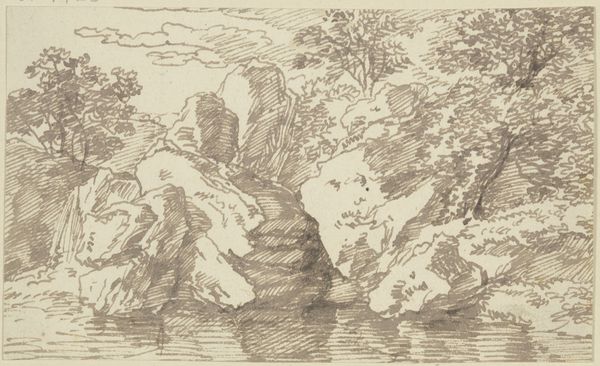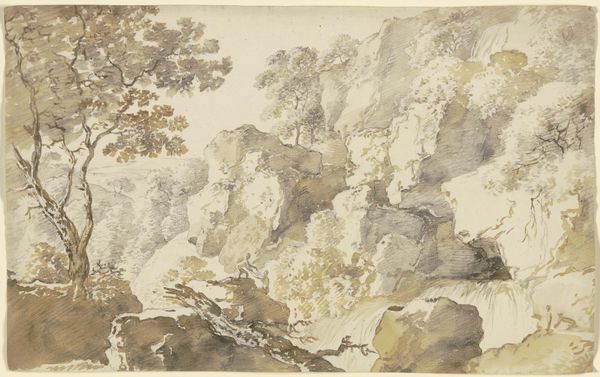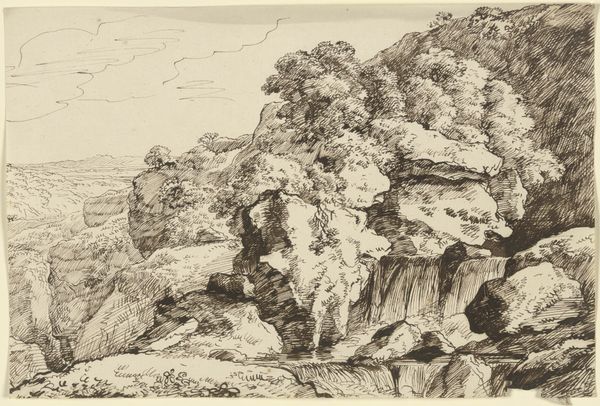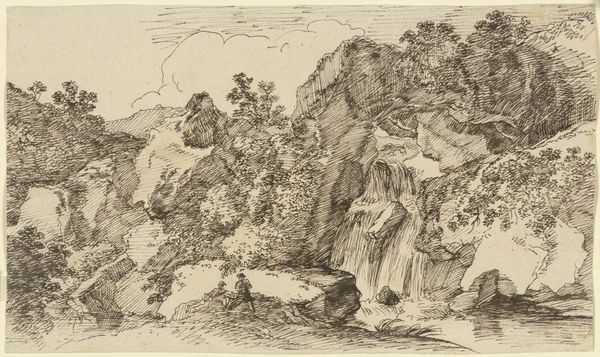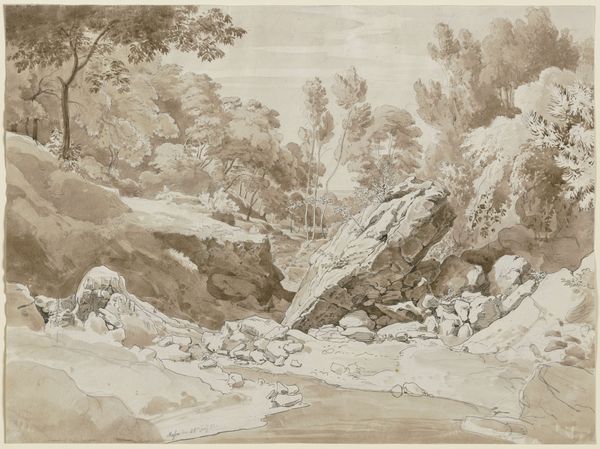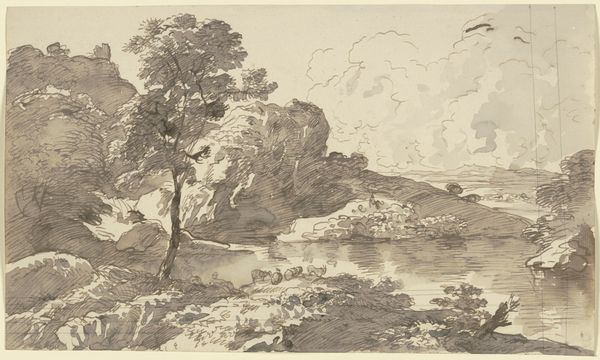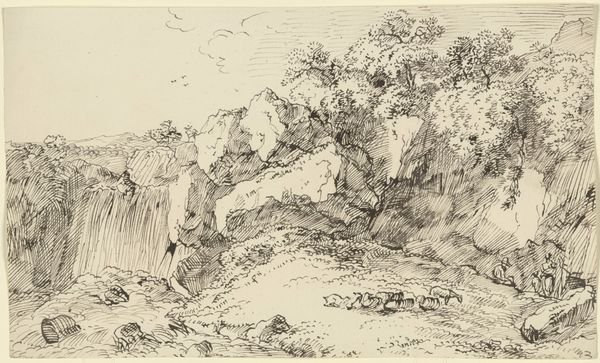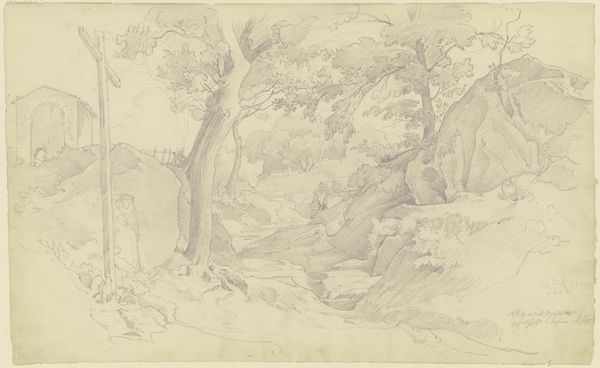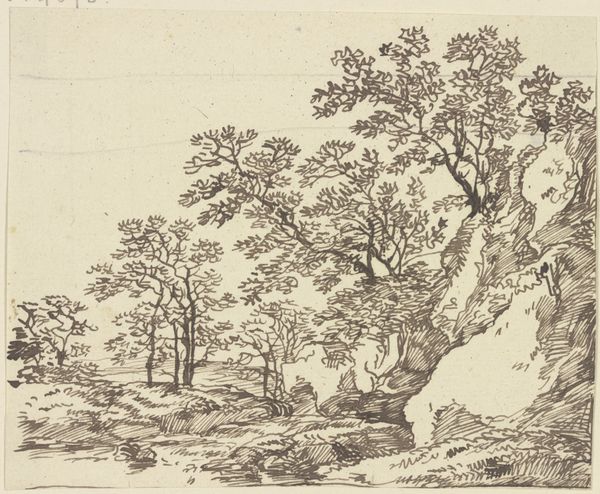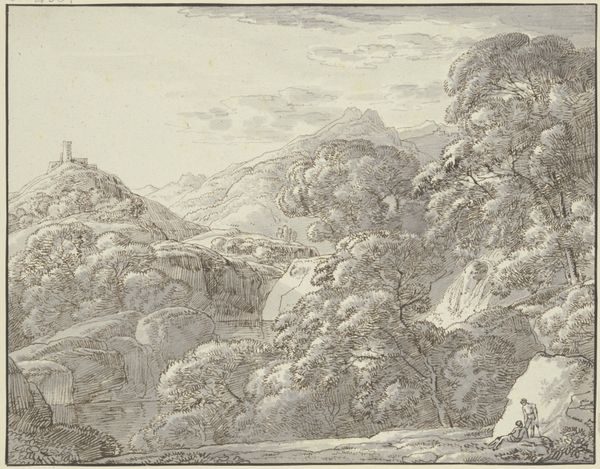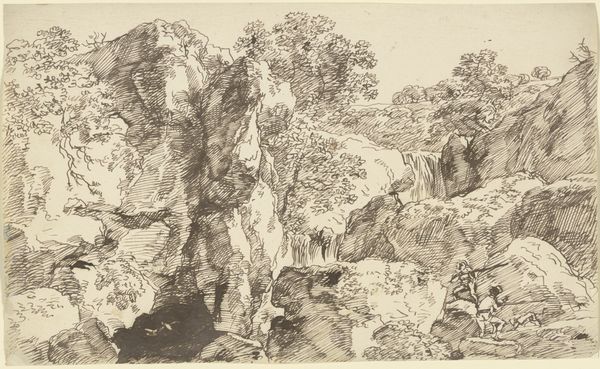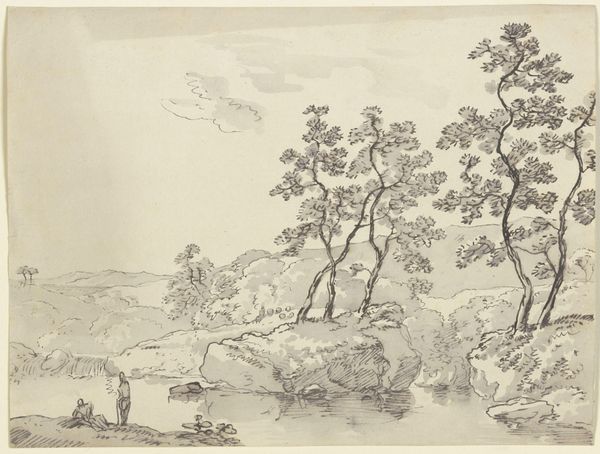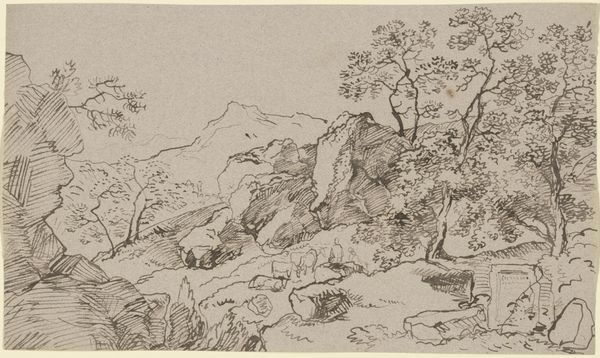
Großes Felsentor, im Vordergrund lagern ein Jüngling und ein Mädchen
0:00
0:00
drawing, etching, paper, ink, frottage
#
drawing
#
etching
#
landscape
#
etching
#
paper
#
ink
#
romanticism
#
15_18th-century
#
frottage
Copyright: Public Domain
Curator: Before us, we have "Großes Felsentor, im Vordergrund lagern ein Jüngling und ein Mädchen" by Franz Kobell. This drawing utilizes etching, ink, and frottage on paper. Editor: It strikes me as something dreamlike, ethereal almost. The scale is vast, dwarfing the figures in the foreground. The overall tonality, primarily grayscale, imbues it with a sense of timelessness. Curator: Observe the composition. The massive rock arch dominates, framing a distant landscape. Semiotically, the arch functions as a portal, transitioning from the known foreground to an undefined horizon. Note the deployment of line, creating texture, suggesting form. Editor: Considering that it employs etching and ink, you can sense the labor involved, how those fine lines collectively built the rocky architecture we’re beholding. The choice of materials speaks to the pre-industrial relationship with landscape—hand-rendered, painstaking, personal. Do you think Kobell deliberately employed the frottage to evoke the uneven surface texture? Curator: Precisely. The materiality complements the scene; we also cannot avoid engaging in an act of speculation regarding what is meant by the frottage itself. Is it a symbol? Perhaps it alludes to some secret of art production... Editor: This challenges that academic ideal that pure aesthetic or representational value is of highest priority. The piece reflects a burgeoning appreciation for manual arts—its roughness is deliberate, almost defiant. Curator: Yet, the careful detail suggests a level of intention exceeding mere utilitarianism. It transcends mere description. Romanticism does strive to imbue an illustration, in its design, to communicate a metaphysical insight. Editor: I appreciate how our own physical presence mirrors the figures in the foreground, contemplating this natural vista. This work really challenges that supposed dichotomy between the built, the rendered, the extracted, and whatever we consider to be the "natural" raw landscape from which all materials come. Curator: I concur. It remains a compelling synthesis of visual poetics. Editor: Indeed, an engaging visual and material conversation.
Comments
No comments
Be the first to comment and join the conversation on the ultimate creative platform.
